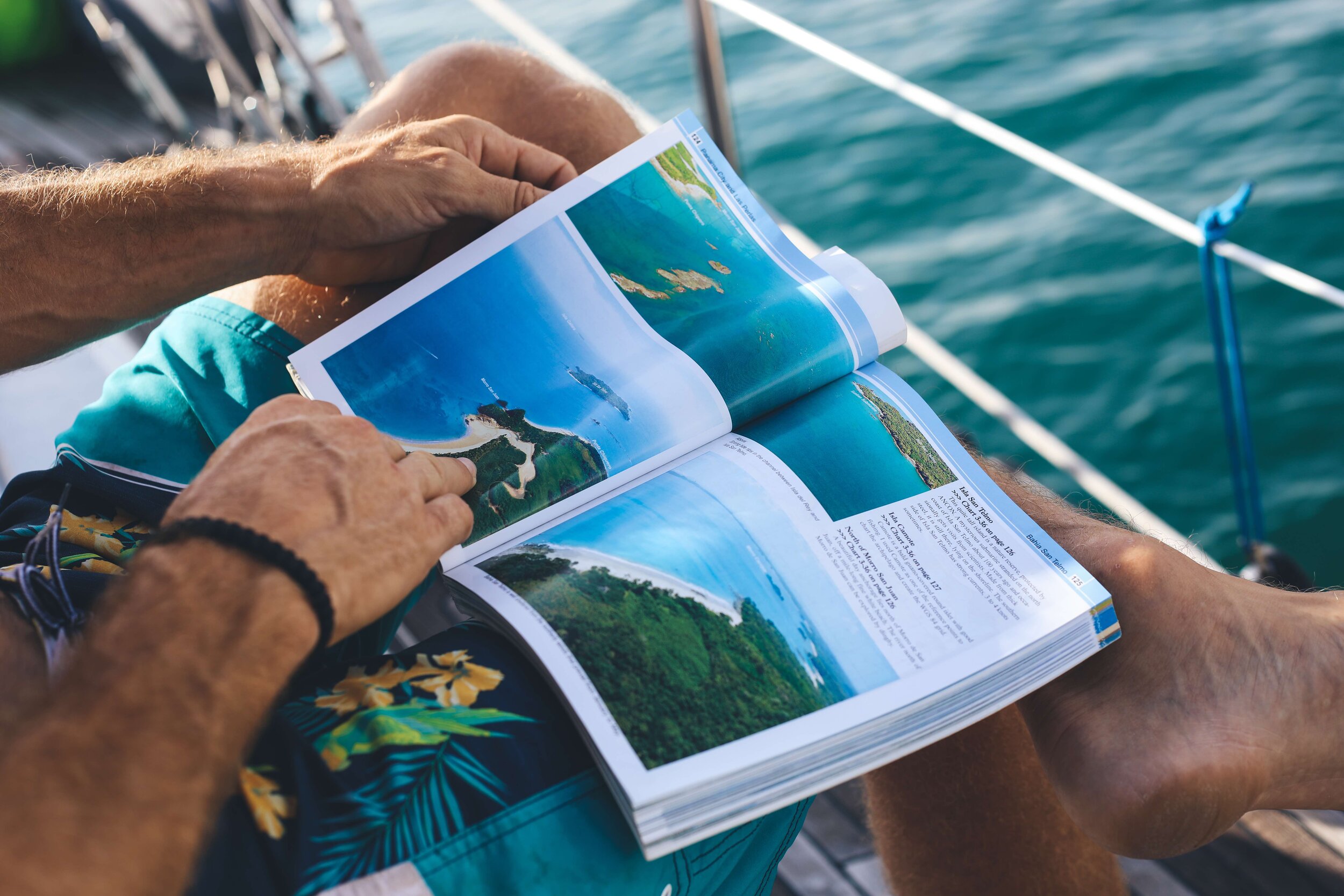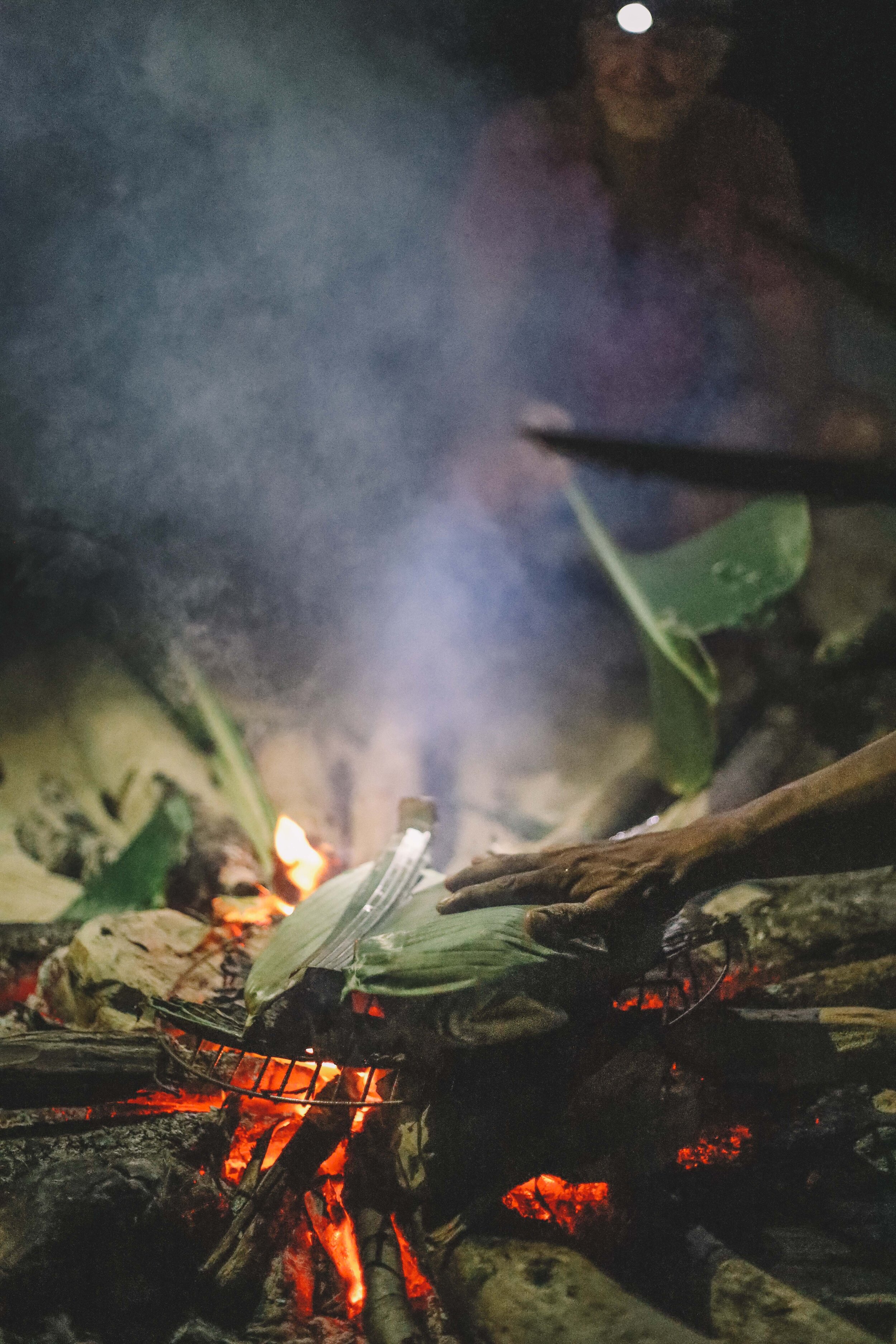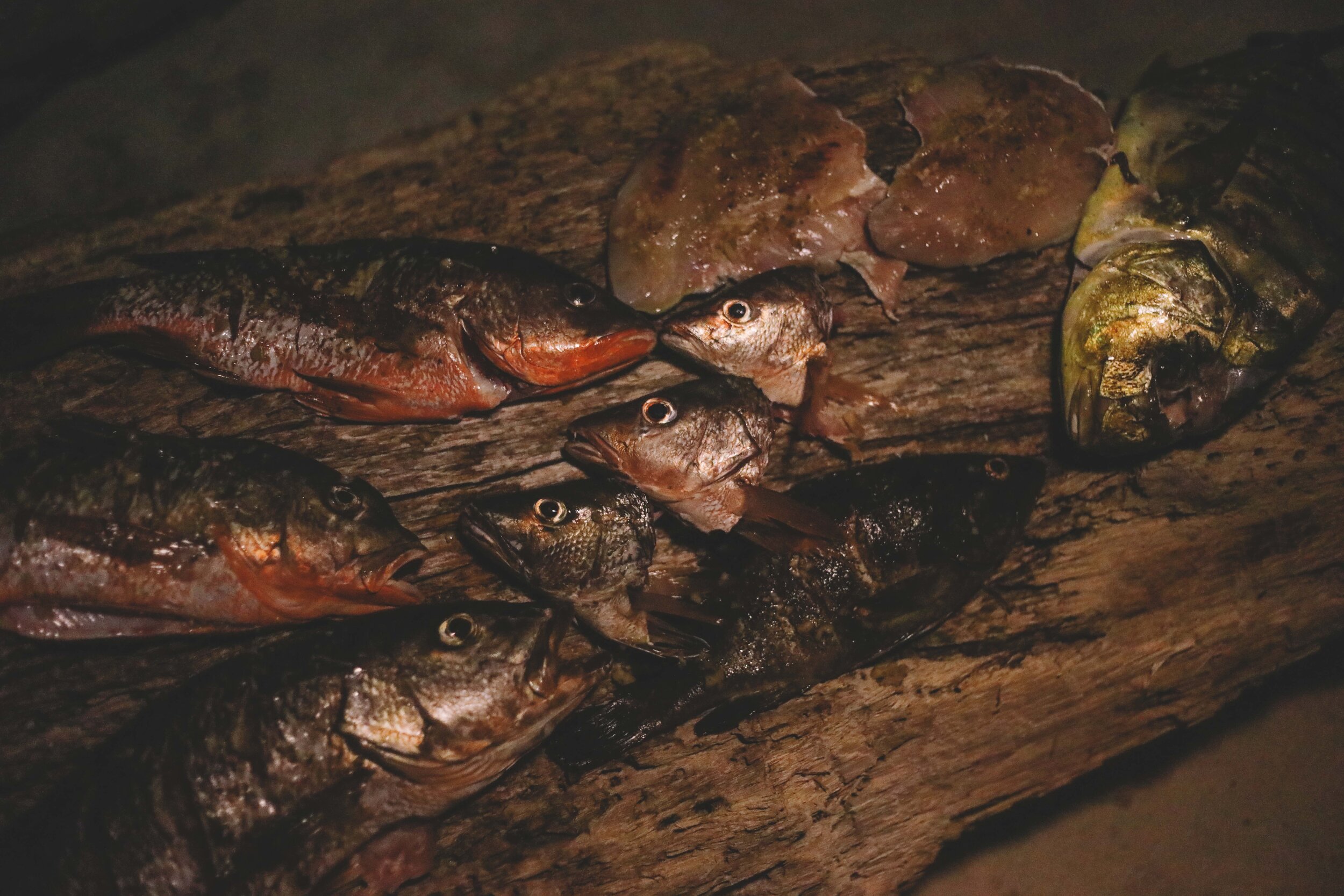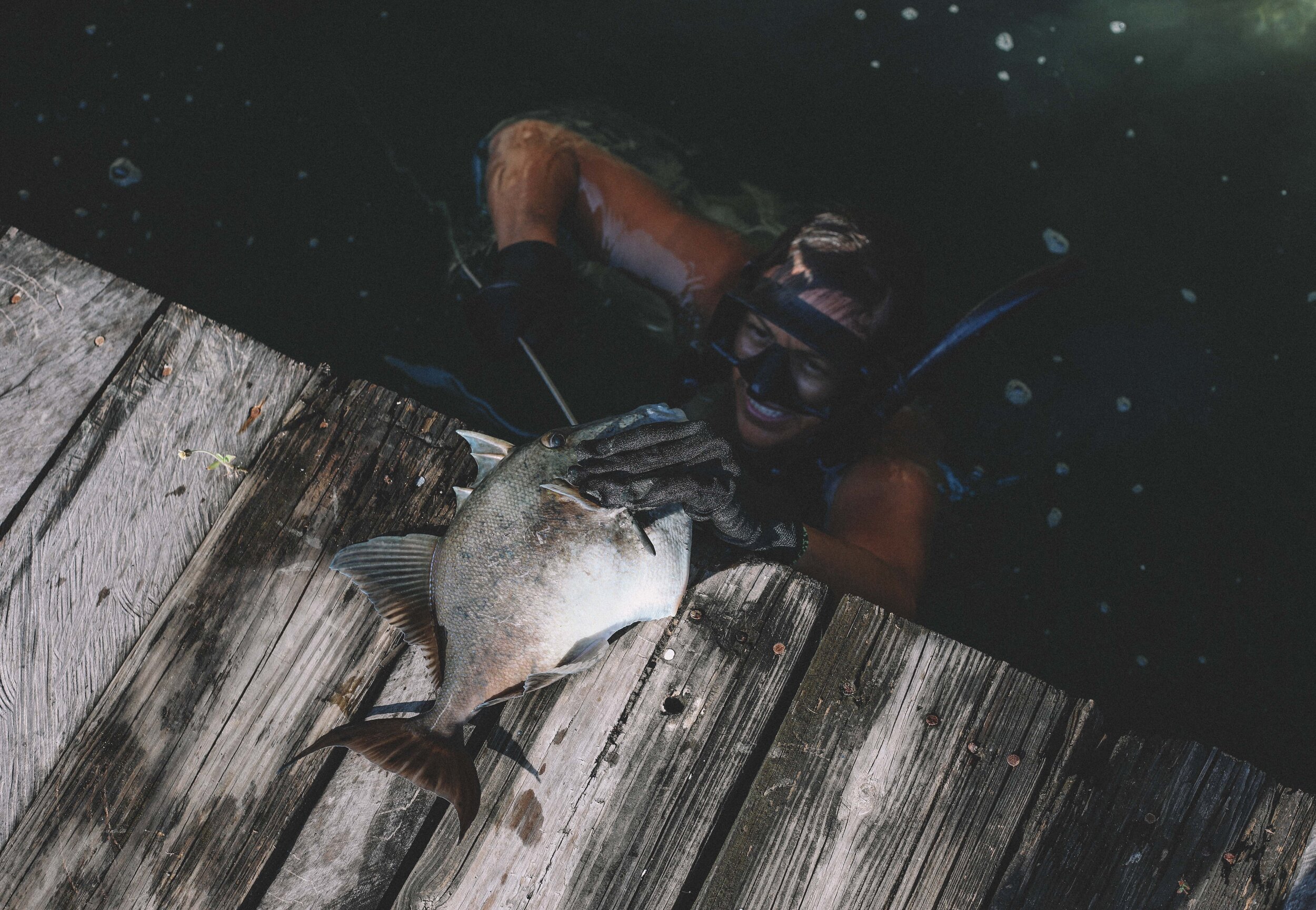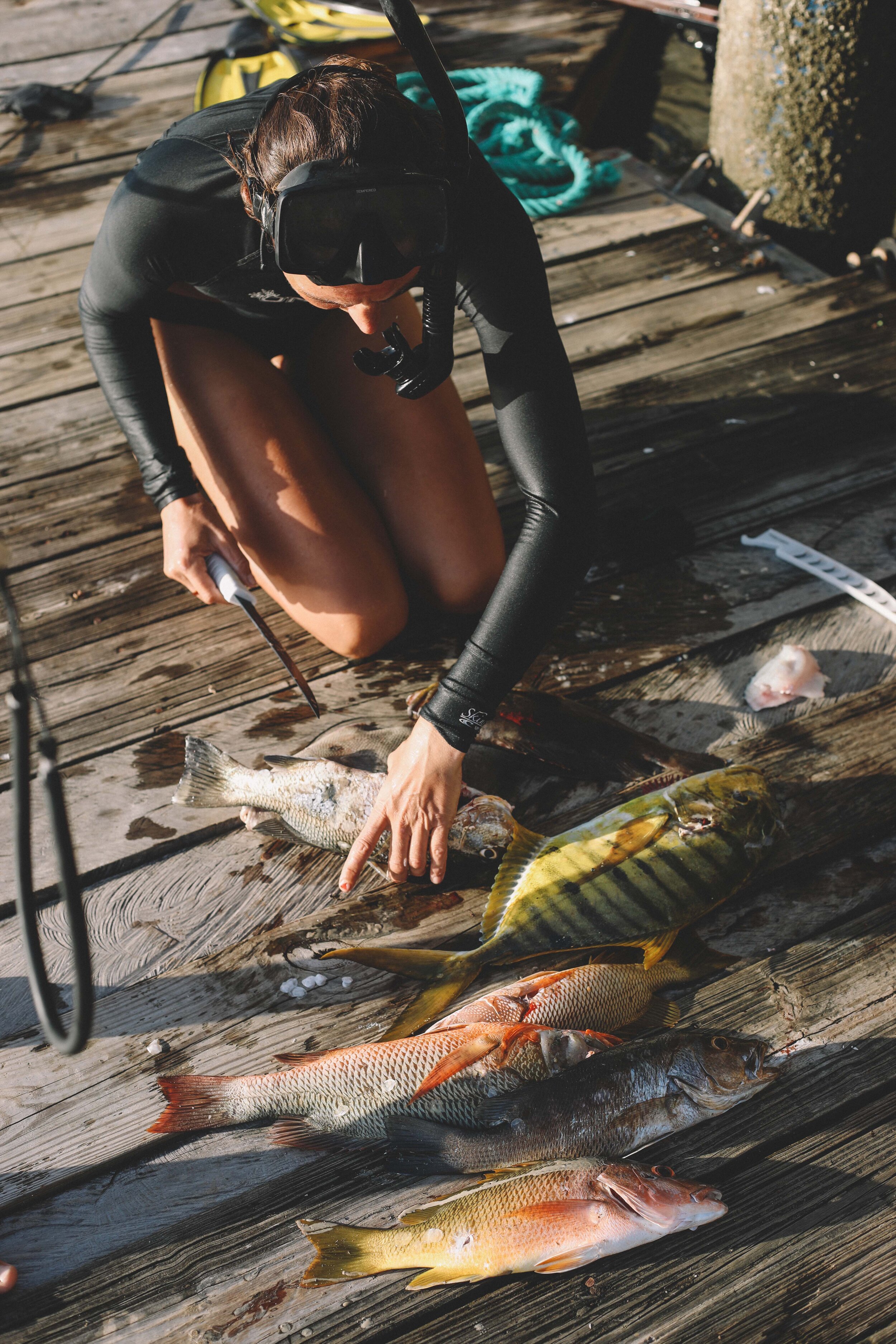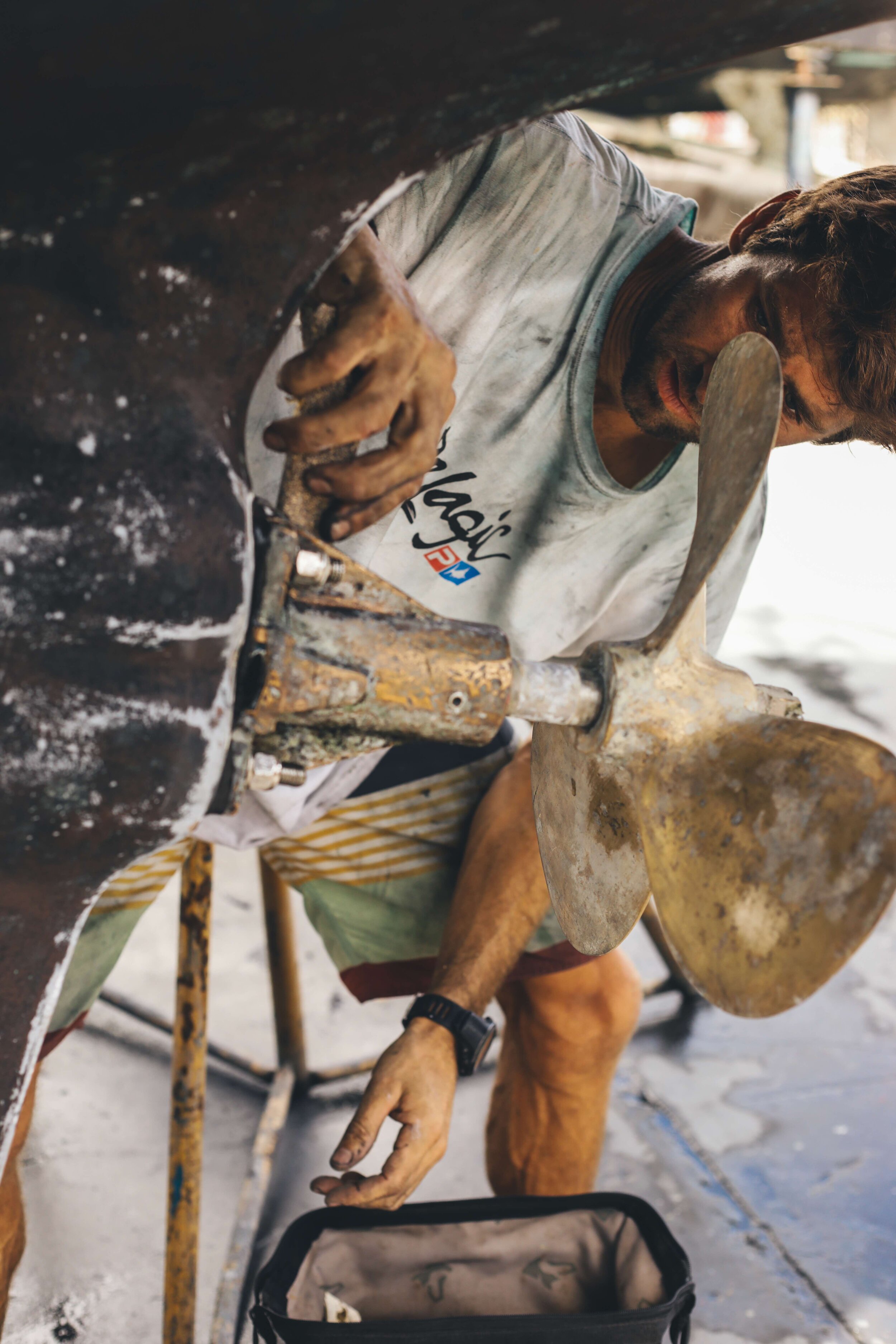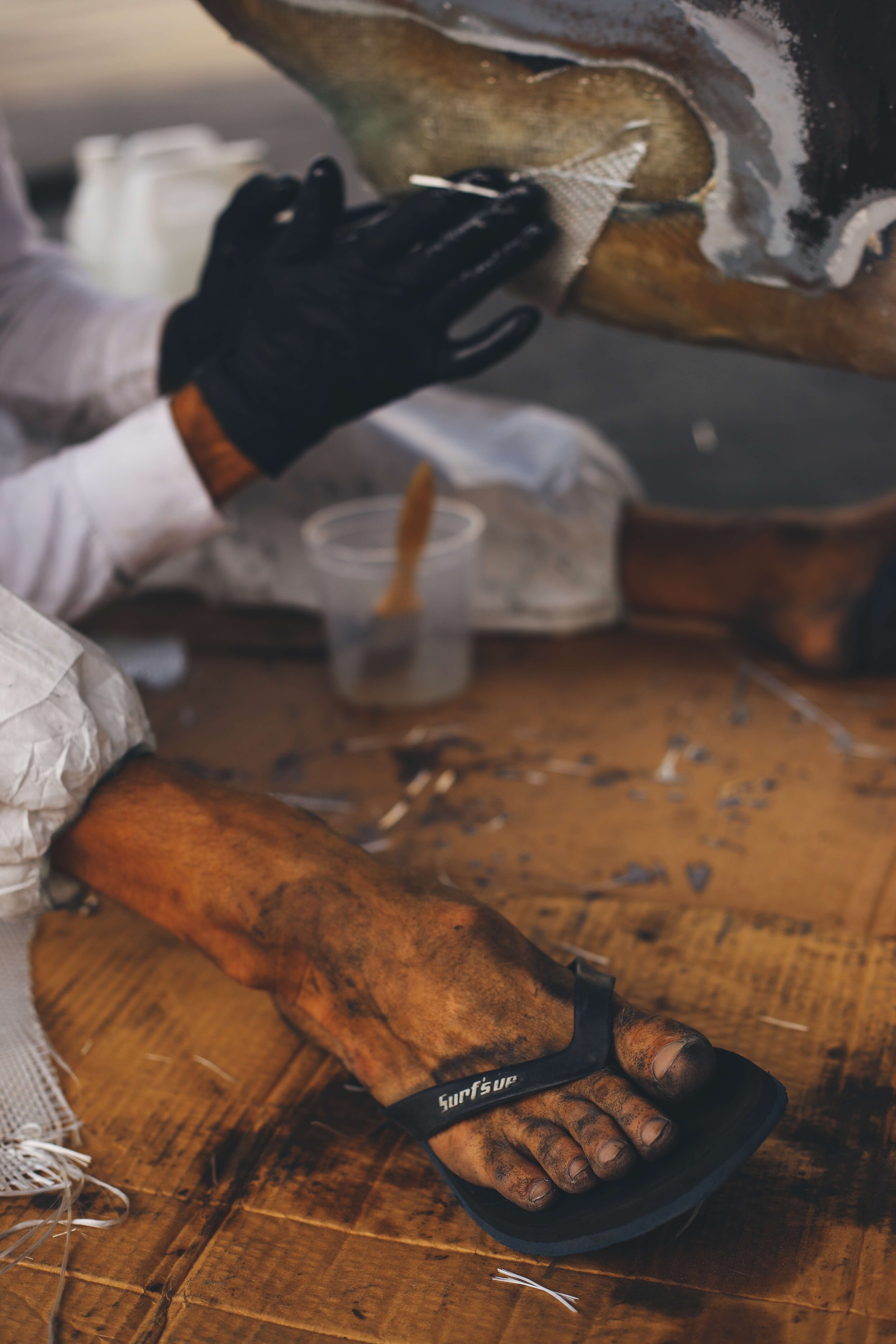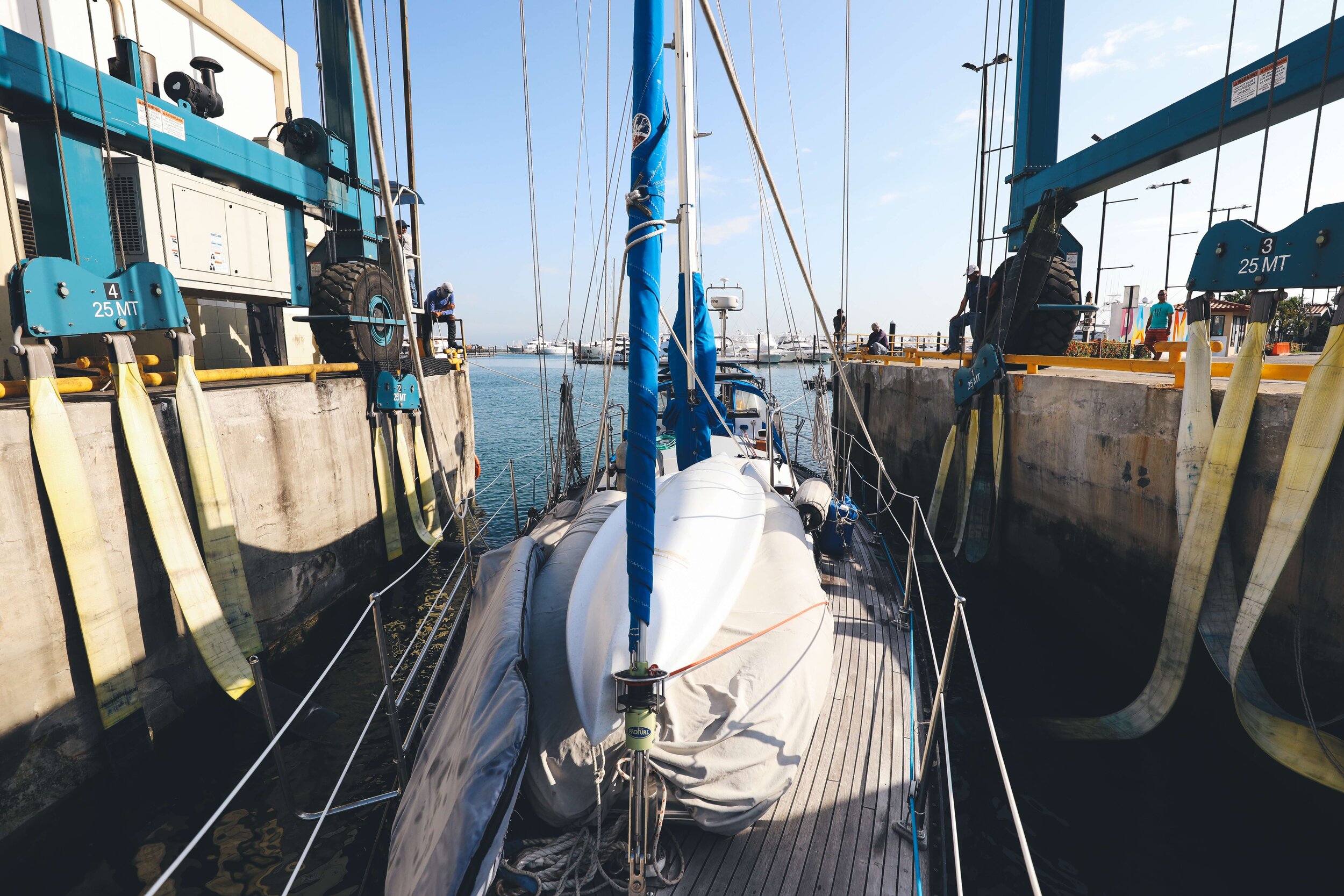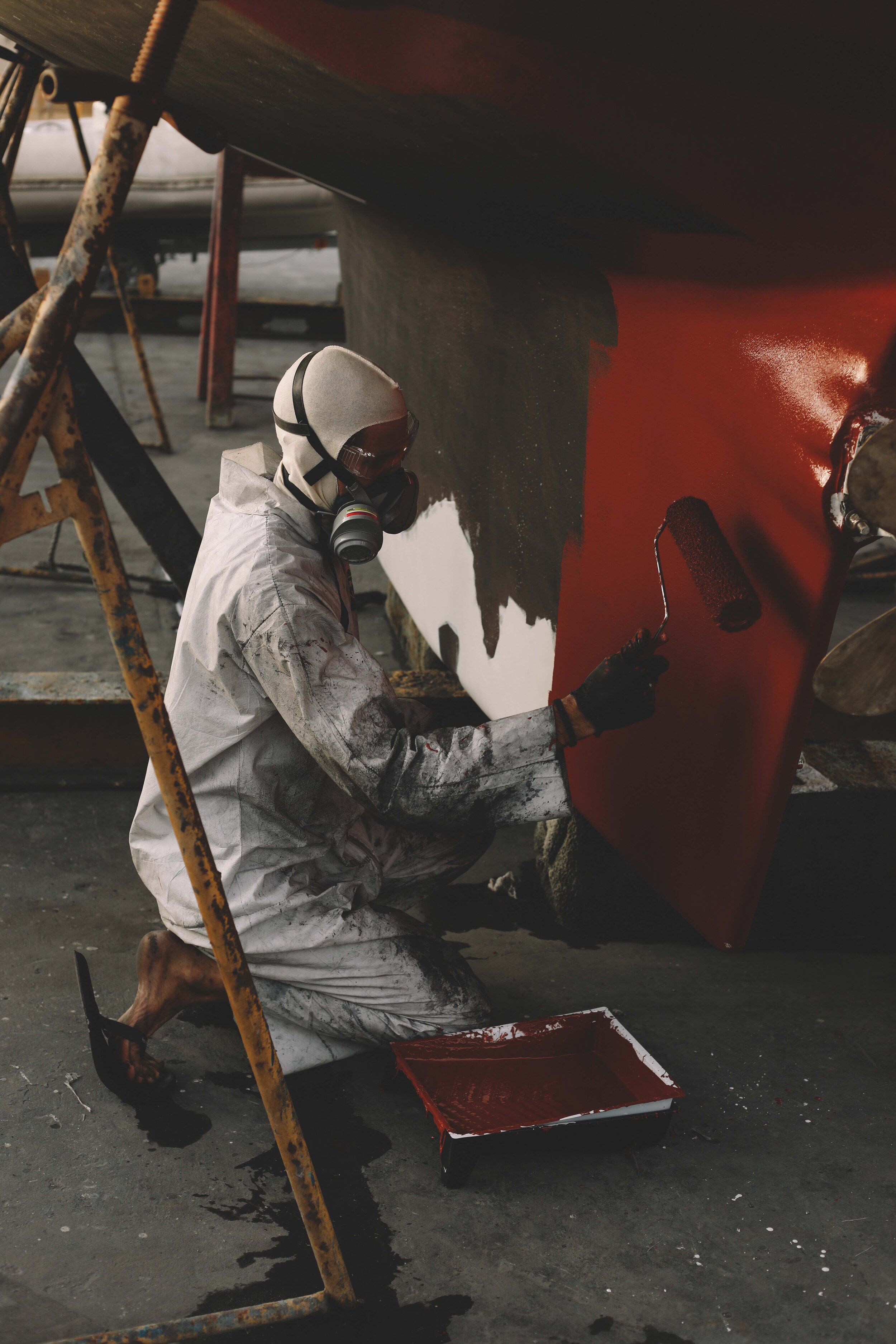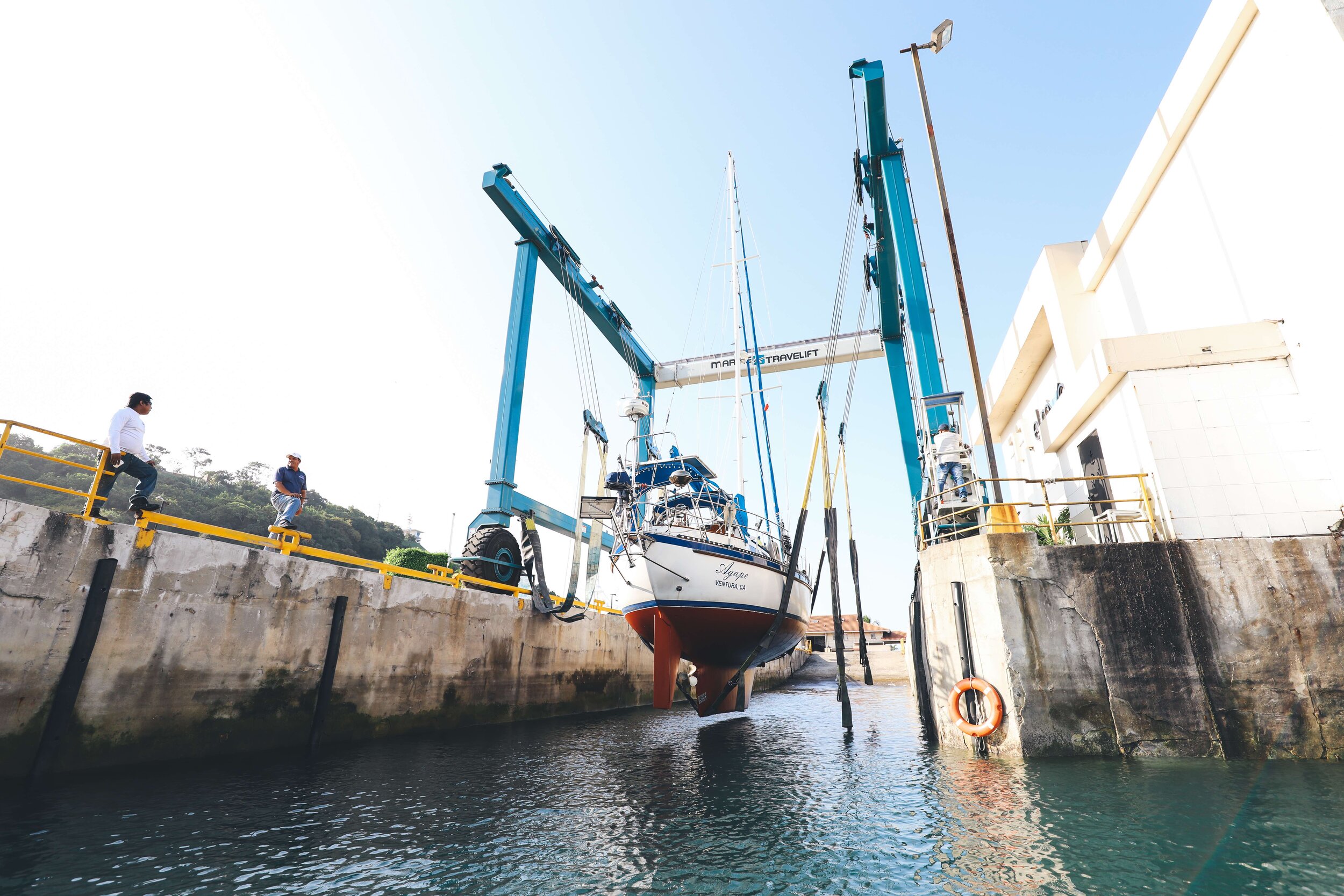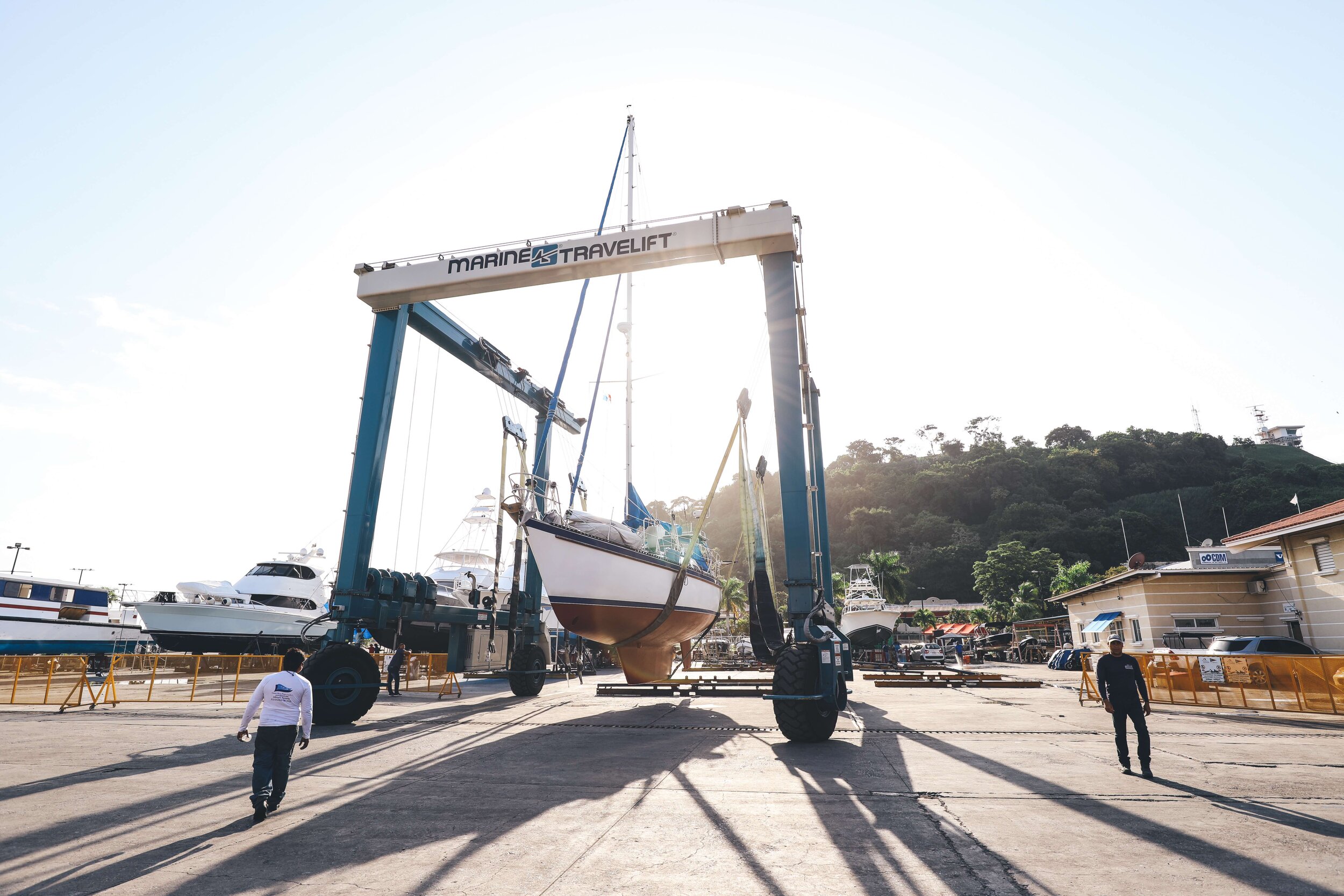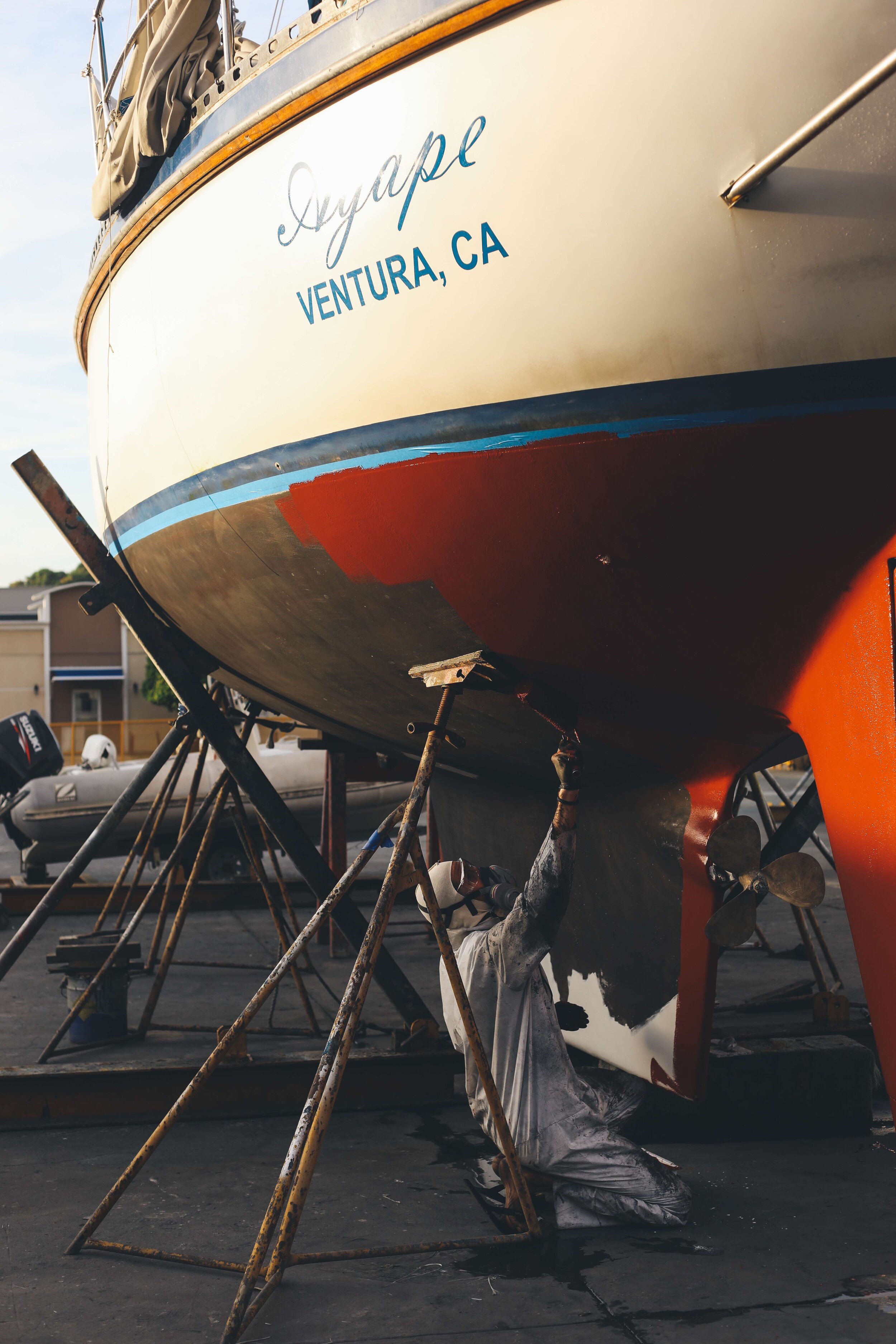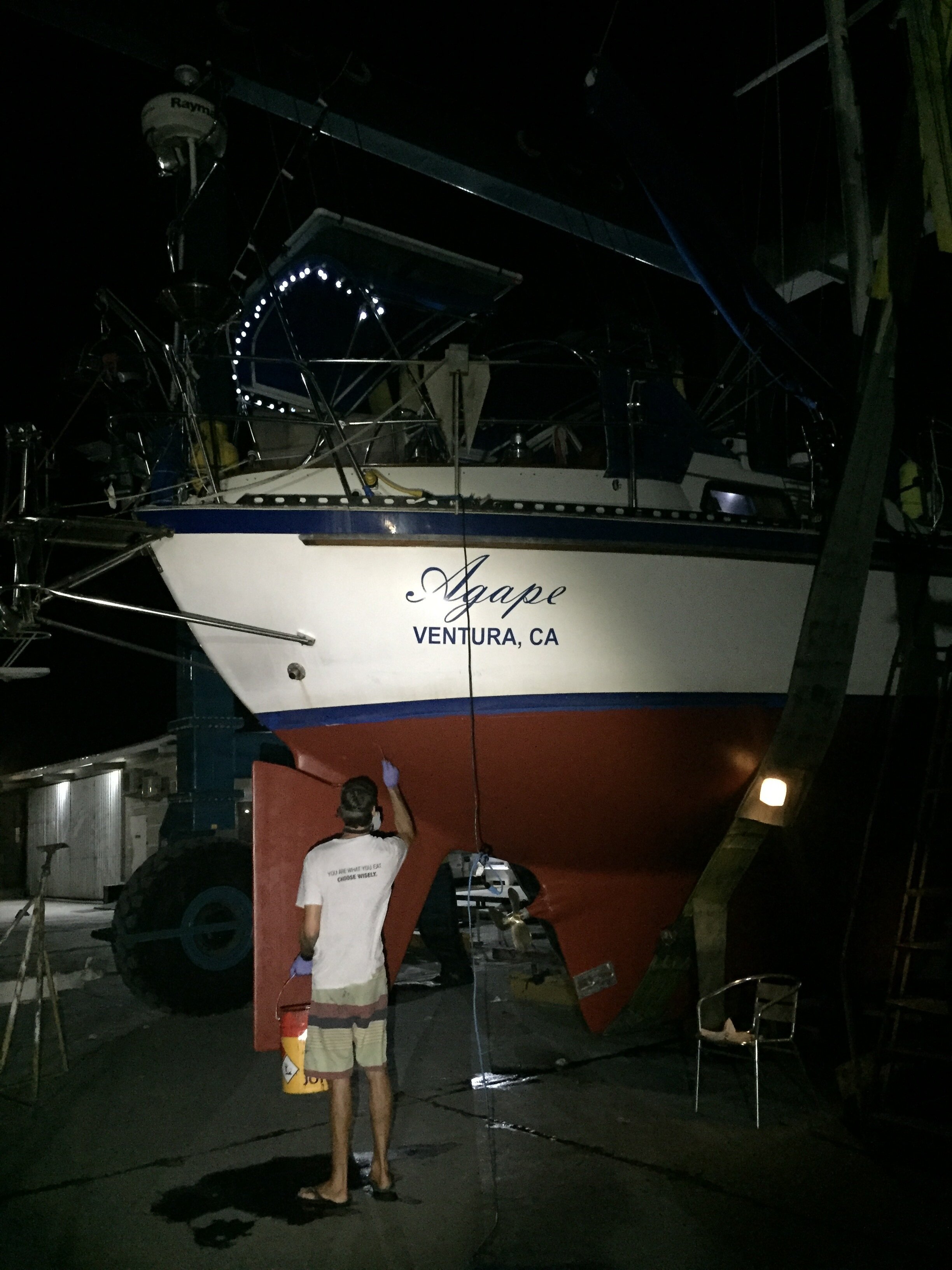A Sailor's Worst Nightmare - Running Aground
We were back on the boat and the cruising was amazing!!! Our first few days at Isla Bona were a great reintroduction to life aboard at anchor and the days held a little of everything that we loved. Now though, we were excited to see the famous Las Perlas islands that we had heard so much about. We had a beautiful day sail over calm waters, caught a mahi mahi and truly could not have had more fun being back on board.
As we squeezed every last mile we could out of our sails in the dwindling wind, we made our way past the first of the Las Perlas islands and into the shallow waters of the archipelago. Dropping our sails, we fired up Mr. Perkins and prepared to make our way around the island of Viveros. Rounding this island from the west takes you through a narrow and shallow channel between the north side of the island and the south side of neighboring, Isla Mina.
We had briefly thought about anchoring in a closer bay as the tide and sun were low, but we really wanted to be able to drop the hook in the company of our friends on the other side of the island. We also had a part for onboard for a fellow cruiser, that they needed before they could begin their Pacific crossing, and as we were showing up a few days later than initially planned we felt a bit of pressure to make it around the corner to deliver it. As the tide began to rise and the sun began to lower in the sky, we made the decision to keep going and arrive just before sunset.
Rachel and I should have read our guidebook a little closer and taken heed to pg. 84, “existing charts of the Las Perlas are very inaccurate. The rocks here are hard, not soft corals, and have taken bites out of more than one yacht”.
Can you guess what happened next?
As we entered the channel, I was focused on the marked dangers on our charts while Rachel was standing at the bow watching for rocks in the murky, green water and failing light. I was so focused on the charts and our depth sounder that it took me a minute or two to realize that there was quite a current pulling us along in the channel. Agape was making almost six knots, when I wanted to be going along more like three.
Just as I reduced throttle a little more, I watched our depth sounder count down from 19, 11, 5, 3. Then Rachel yelled from the bow, the last thing a captain wants to hear, “ROCKS!!!”.
Instantly I threw Agape into reverse and asked for all old Perky could give us. Even at 3,600 revs it was not enough. Within fractions of a second Agape, with over 15 tons of mass came to a violent stop. I looked on in horror as Rachel was thrown from besides the furler into the bow pulpit. All I could do was watch as time slowed downed. Agape’s rig shook, her furled headsail swayed wildly, Mr. Perkins screamed along in reverse, and worst of all Rachel was hanging half on, half off the bow of the boat, clinging to the pulpit and lifelines.
The engine was no match for the current and we were drug over two large rocks that were in the middle of the channel. Our home was laid hard on her side as the keel ground across the tops of the rocks, I just tried to keep the rudder in deeper water.
You can see just how many rocks are marked on the charts around these islands.
The red circle is where we hit the rocks. We thought we were in the clear and had passed the charted dangers.
It’s amazing how many thoughts and emotions can run through your head in a split second. Are we going to loose our home? Was this it for Agape and our time cruising? Is the bilge filling with water? Is the current pushing us up on to a reef or is it just a rock? Is there anyone nearby who can help us?
Those few seconds and minutes felt like an eternity. It was scary and we just prayed that it wasn’t the end of our cruising. After the second rock passed under us, Agape righted herself. I yelled at Rachel to get back into the cockpit, not caring about having a look out at this point, I only cared about keeping her safe. We continued in the shallow water of the channel just trying to keep it together long enough to make it into deeper water on the other side.
As soon as we felt “safe”, we quickly dropped the anchor, killed the engine and did a bilge check, lifting all the floorboards to make sure there was no water coming into the boat. With the bilge still dry and the helm feeling responsive, I decided to jump into the water and asses the damage. Mind you at this point Rachel was crying uncontrollably and I was trying to hide my fear and wrecked nerves by allowing a near nonstop string of profanities to pour out of my mouth.
Because the current was still so strong and the damage was most likely to be at the front of the keel, I dropped a line in the water from the bow and used this to hold onto while I dove in to inspect the bottom. Surprisingly, the damage was pretty minor compared to what I had imagined in my head. From what I could tell, all the damage was to the keel. We had lost a good chunk out of fiberglass on the leading and trailing edge, and had some deep scratches along the bottom of the portside and a couple of gouges out of the bottom, but the hull and rudder managed to remain untouched. In fact, I would’ve not thought twice about continuing to sail with a boat like ours if there hadn’t been a haul out facility so close by.
With the boat fit for service, we decided to move the last mile around the corner and into the anchorage where we would be free of the current and could finally let our nerves unknot. As if the universe wanted to add insult to injury, or maybe it was just because I was still shaking with adrenaline and my brain was not fully functioning again, whatever the cause, moments after raising the anchor the engine came to a sudden stop and stalled. Yelling at Rachel to drop the anchor again, I knew immediately what had happened. I had left the line I dove on in the water and it had wrapped around the prop, stalling the engine. AAAAHHHHHH!!!
I jumped back into the water to cut ourselves free so we could finally make our way into the anchorage and set the hook. There we’d sit in shock and stare at each other in complete disbelief at our misfortune. It was time for a stiff drink! Luckily for us there was a yard in Panama City and they had space to haul us out the next week. So, we decided to stay and hang out at Isla Viveros for a few days to try to relax and unwind before we had a week of hard work repairing Agape.
We spent the next three days getting over the initial trama of almost loosing our home and tried to have a little bit of fun, exploring a really amazing little island with our friends. We spearfish in the afternoon, had a beach bon fire one night and lounged at one of the island’s resort pools using their wifi to research as much as we could about the work we’d need to do on the hull.
Here are a few things we learned from our experience:
Rocks are hard.
Even though we had checked the tides, we choose to go anyway with the rising tide and it was big mistake!!! Instead of being in a hurry to meet up with friends, we should have met them the following day and waited to move through the pass at high tide when the current was not moving as fast.
If you have a person at the bow looking for rocks or bommies, expect and prepare for the worst. Have them wear a PFD and tether. If Rachel would have gone in and been swept away from the boat… I don’t even want to think about it.
Agape’s over laid fiberglass, intrigal keel (part of the hull not bolted on), and overall robust construction comes at a cost. We probably won’t win a transpac race anytime soon, but where most boats would have lost their keel and rolled belly up, Agape kept us safe and took the hit like a heavy weight boxer!! A heavy displacement boat is a good idea if you want to cruise in poorly charted areas.
Here we also began a top to bottom, bow to stern rigging, bulkhead, and structural inspection of the boat. A hit that hard puts a tremendous amount of force on every part of the boat, even the tankage. We wanted to make sure to find any damage before heading to the boat yard so we could plan to make repairs while on the hard, and before entrusting our lives to Agape on our upcoming Pacific crossing.
It was soon time to make the long sail back to Panama City and the Flamenco boat yard. We spent the time list making and getting preparing the boat for some serious work days!!! We knew we would have to source a lot of materials in a completely new city, do a ton of hard labor and try not to break our bank account at the same time. We made a detailed hit list of everything that we though would need to be done and how long I thought it would take to help keep us on track. We knew we couldn’t afford to stay long on the hard as the marina charged over $300 a day just to sit on the hard! Because of these steep price we hoped to have all our work done in four to five days.
Agape was hauled just before the marina closed for the day and we were able to get a good idea of the work ahead of us. Flamenco doesn’t allow work after hours or for you to stay on board, so we heading into the city to get checked into a hostel for a few nights. In the morning the hard work world begin!
Rachel would be my “go to” person over the next few days. She sourced everything from fiberglass and bottom paint, to paint brushes and the epoxy and resin. I truly could not have done the work so fast with out her. She reminded me to drink water and cooked every meal making sure I had the energy to keep going.
Here is a quick breakdown of our time on the hard:
Day One: Grind out all damaged fiberglass, fare areas in preparation for new glass or epoxy and start sanding the rest of the hull in preparation for new bottom paint. Rachel traveled into the city to find and purchase all the materials we’d need to make the repairs.
Day Two: Glass the larger areas and use thicked epoxy to fill in the smaller gouges and nicks. (Fiberglass and I have a love hate relationship. I love it because you can repair large areas relatively quickly and once a job is complete, if done correctly, it is invisible and just as strong as before. But it is itchy, and can be messy!!! ) Continue sanding hull in preparation for paint.
Day Three: Fairing of the hull, followed by painting all worked on surfaces with barrier coat (epoxy paint), three layers. Then paint our first layer of bottom paint. This was a long day because I had now started the painting process and you have certain time deadlines for topcoats and overcoats. So even though we got to the yard at 6am we did not leave until after 9pm (luckily there was very low humidity).
Day Four: More bottom painting. Polished the prop. Again with a eight to nine hour re-coat time this was a long day!
Day Five: On schedule we launched the boat!!!!
Well for the most part this is how the work progressed. From sun up to well after dark we were in the yard working.
Luckily for us, the lay up of Agape’s keel was done very well and there was no cracking or splintering of the glass. The only real hang up for us was that we couldn’t find West Systems epoxy, so had to use another local brand bought in bulk, which ended up not being a biggy. I first mixed a large batch of thickened epoxy with the wrong filler, one that is really, really, really hard to sand. Not wanting to be wasteful, I used it and payed for my mistake with a couple extra hours of sanding.
But true to our timeline (which for boat work never usually happens), the morning of the fifth day Agape was launched!!!!
The plus side of us grounding the boat (who has ever said that haha!) was that we hauled out just two months before our Pacific crossing and Agape got new bottom paint, a polished prop and her underside inspected, helping to ensure a safe and fast passage to the Galapagos.
Rachel and I walked away from this experience with a new found caution for shallow waters, as well as strong currents. We also learned our lesson, again… Do not to rush or force timelines! If the tide, current, weather or whatever isn’t in your favor, and its not life or death, then just wait. We had the time and one more night wouldn’t have mattered in this case. So as always, “Slow is Pro”.
Now with that nightmare of the way, we could head right back out to the Las Perlas and continue to actually enjoy our time cruising there!!!


